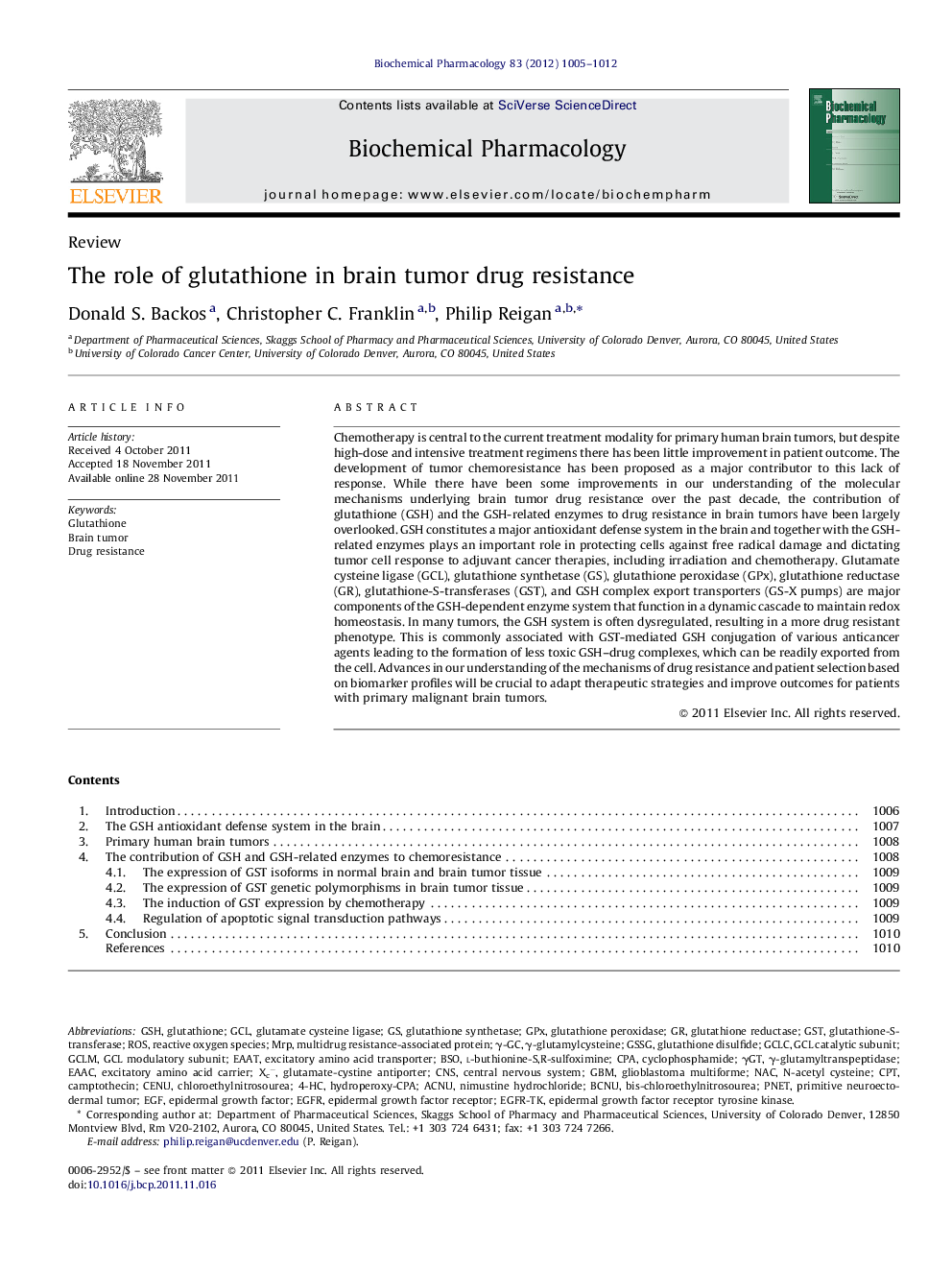| کد مقاله | کد نشریه | سال انتشار | مقاله انگلیسی | نسخه تمام متن |
|---|---|---|---|---|
| 2512905 | 1118382 | 2012 | 8 صفحه PDF | دانلود رایگان |

Chemotherapy is central to the current treatment modality for primary human brain tumors, but despite high-dose and intensive treatment regimens there has been little improvement in patient outcome. The development of tumor chemoresistance has been proposed as a major contributor to this lack of response. While there have been some improvements in our understanding of the molecular mechanisms underlying brain tumor drug resistance over the past decade, the contribution of glutathione (GSH) and the GSH-related enzymes to drug resistance in brain tumors have been largely overlooked. GSH constitutes a major antioxidant defense system in the brain and together with the GSH-related enzymes plays an important role in protecting cells against free radical damage and dictating tumor cell response to adjuvant cancer therapies, including irradiation and chemotherapy. Glutamate cysteine ligase (GCL), glutathione synthetase (GS), glutathione peroxidase (GPx), glutathione reductase (GR), glutathione-S-transferases (GST), and GSH complex export transporters (GS-X pumps) are major components of the GSH-dependent enzyme system that function in a dynamic cascade to maintain redox homeostasis. In many tumors, the GSH system is often dysregulated, resulting in a more drug resistant phenotype. This is commonly associated with GST-mediated GSH conjugation of various anticancer agents leading to the formation of less toxic GSH–drug complexes, which can be readily exported from the cell. Advances in our understanding of the mechanisms of drug resistance and patient selection based on biomarker profiles will be crucial to adapt therapeutic strategies and improve outcomes for patients with primary malignant brain tumors.
The glutathione (GSH) biosynthetic pathway in brain tumors. (A) Most brain tumors arise from 3 main cell types or their progenitors: neurons (green), oligodendrocytes (cyan), and astrocytes (magenta). (B) GSH biosynthesis consists of two ATP-dependent reactions: (1) glutamate cysteine ligase (GCL)-mediated formation of γ-glutamyl-cysteine (γGluCys) from glutamate (Glu) and cysteine (Cys) and (2) GSH synthetase (GS)-catalyzed formation of GSH from γGluCys and glycine (Gly). Buthionine sulfoximine (BSO) is an irreversible inhibitor of GCL. Detoxification of chemotherapeutic agents proceeds via the GSH-S-transferase (GST)-mediated formation of GSH-drug conjugates (GSH-X) followed by efflux by multidrug resistance protein (Mrp) transporters. γ-Glutamyl transpeptidase (γGT) can break GSH down into Glu and cysteinylglycine (CysGly). CysGly is further hydrolyzed by cellular dipeptidases (DP) followed by the transporter-mediated uptake of the constituent amino acids that can serve as substrates for either cellular GSH production or protein synthesis. Additional Cys may also be obtained via the glutamate-cystine antiporter (Xc-)-mediated uptake of extracellular cystine (CysCys).Figure optionsDownload as PowerPoint slide
Journal: Biochemical Pharmacology - Volume 83, Issue 8, 15 April 2012, Pages 1005–1012